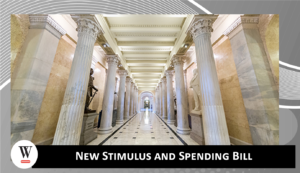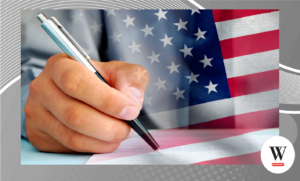 In case you missed it—or wish to review!
In case you missed it—or wish to review!
We saved the Powerpoint from our webinar presentation earlier today,
which you can download here: Paycheck Protection Program Round 2

January 15 2021
 In case you missed it—or wish to review!
In case you missed it—or wish to review!
We saved the Powerpoint from our webinar presentation earlier today,
which you can download here: Paycheck Protection Program Round 2
January 14 2021
 Get all the latest information you need about Payroll Protect Program (PPP) best practices and what you need to know NOW. Save your spot. Register now.
Get all the latest information you need about Payroll Protect Program (PPP) best practices and what you need to know NOW. Save your spot. Register now.
Count on Werner & Co. CPAs to keep you up to date through these Zoom meeting presentations.
Register in advance for the webinar presentation by clicking the link. After registering, you will receive a confirmation email with further instructions to join the meeting.
……………………………………………………………………
PPP best practices new year update
January 15, 2021 Monday 1:30 PM Eastern Time (US and Canada)
https://zoom.us/meeting/register/tJArcu2rqD8tE9EPnztmZnZ9auN1xBl9Xkc0
After registering, you will receive a confirmation email with instructions to join this meeting.
December 28 2020
Long awaited new stimulus and spending bill finally passed last evening.
……………………………………………………………………
 Dear clients and friends:
Dear clients and friends:
We hope you’re enjoying the abnormal holiday season upon us and staying healthy. Late Sunday night, President Trump signed into law a second significant stimulus package as part of H.R. 133. This $900 billion bill provides Covid-19 related relief to businesses and individuals. The bill is over 5,500 pages in length, we summarized the major tax components below.
The bill provides another round of individual stimulus payments – $600 for individuals, $1,200 for married couples, plus $600 for each dependent child under age 17. Taxpayers over the age of 17 and claimed as a dependent on another return are ineligible to receive a payment. Payments phase out once adjusted gross income (AGI) exceeds $75,000 for single filers and $150,000 for married filers. Your 2019 AGI will be used to determine payment amount.
These payments represent an advance against a 2020 tax credit that can be claimed on your 2020 1040. Checks will be sent in the coming weeks; the Treasury will use bank information on file with the IRS for direct deposit.
Included in the bill is an additional $300 per week for all workers receiving unemployment benefits, through March 14, 2021. PUA also was extended until March 2021 for self-employed and gig workers. The bill increases the maximum number of weeks someone can claim benefits through regular state unemployment or the PUA program to 50 weeks.
This program originated during the CARES Act. This bill includes $284 billion for Round 2. The program will operate like the first round but there are some changes.
Deductibility of expenses paid with PPP funds. Section 276 of the latest bill states that “no deduction shall be denied or reduced, no tax attribute shall be reduced, and no basis increase shall be denied, by reason of the exclusion from gross income. Businesses may take deductions for business expenses paid by PPP loans, including businesses that already filed for forgiveness.
Simplified Forgiveness application for loans under $150,000. These borrowers will only be required to submit a one-page form and only subject to audit if they commit fraud or use the proceeds for improper purposes.
Eligibility for Second Round Loan – 300 or fewer employees (down from 500), have already or will use all proceeds from initial PPP loan, and can establish that they experienced a 25% drop in gross receipts during any quarter in 2020 compared to that same quarter in 2019. As of this writing, guidance on determining gross receipts has not been established. We should have answers from the SBA within the next 10 days.
Loan amounts will be based on 2.5 times the borrower’s average monthly payroll for 2019, limited to $2 million. Food service and accommodation industries are permitted to borrow 3.5 times average monthly payroll, still limited to $2 million.
All borrowers are required to spend 60% of loan proceeds on payroll costs – wages, health insurance, payroll taxes.
New legislation also provides PPP borrowers who have not yet applied for forgiveness the opportunity to spend proceeds on four new non-payroll expenses, in addition to rent, utilities and interest costs. Non-payroll costs cannot exceed 40% of the total costs eligible for forgiveness.
Covered Period to spend PPP proceeds is no longer locked into either 8 weeks or 24 weeks, the borrower can choose any period between 8 and 24 weeks.
……………………………………………………………………
100% business meals deduction permitted in 2021 and 2022. You still need to meet requirements such as not lavish, taxpayer is present, as is an employee or business associate and business was discussed.
Charitable contributions deduction, taxpayers who do not itemize their deductions can claim up to a $300 charitable deduction when calculating their adjusted gross income in 2020. This provision extends that deduction to 2021 and increases the deduction to $600 for married filers.
Unreimbursed medical costs are deductible to the extent they exceed 7.5% of AGI. This bill makes that permanent instead of increasing to 10% as was set to happen in 2021. Ex. AGI is $100k, medical expenses paid of $10k, you would receive a medical deduction of $2,500.
Permanent Section 179D costs, this allows a limited deduction for energy efficient improvements made to nonresidential rental.
Additional loan forgiveness under SBA – under CARES Act, the SBA paid six months of a borrower’s principal and interest on existing Section 7 loans. This bill provides an additional three months beginning February 2021 and for taxpayers involved in hospitality and accommodation industry allows for eight months. The amount paid under this program is not taxable.
More details will emerge now that the bill is finalized, and as new information rolls out we will continue to provide information to you. Once the SBA provides further guidance (they have 10 days to do so) on the second PPP we will be conducting webinars to answer questions and go into further details. Look for that invitation via email.
2020 has certainly proved to be a challenging year for everyone but we are grateful for your continued trust and working together to find solutions. We will get through this, stay positive, stay strong and stay healthy. As always if you have questions about this bill or other matters, please contact us.
The team at Werner & Co. CPAs
September 13 2020
Important! You still need to know about the latest changes and rules for proper bookkeeping for Paycheck Protection Program loan forgiveness.
Download our latest, up-to-date PPP Estimated Loan Forgiveness Worksheet spreadsheet to track all the necessary PPP expense information.
August 17 2020
Four executive orders, each dealing with a separate topic, were signed on Saturday, August 8th.
……………………………………………………………………
 To our clients and friends:
To our clients and friends:
We continue to hope you are well and finding ways to work and take care of your responsibilities as the pandemic continues. As part of our responsibility, we offer this update with respect to the four executive orders that were signed on Saturday August 8th.
Before getting into specifics on the signed orders, we would like to remind all clients that participated in the PPP loan program to hold tight before applying for forgiveness. The forgiveness application is still being re-worked and we expect to see a simpler forgiveness application for loans under $150k.
As virtually every news outlet reported, there are four orders, each dealing with a separate topic. The most widely discussed is the reworking of the federal addition to state unemployment benefits. In sum, it provides for replacing the $600 federal payment that ended on 31 July with $300 in federal disaster funds and a $100 match from state funds. Also receiving significant attention is the order creating a deferral of employee payments of FICA and Medicare withholding for people earning less than about $104,000 per year, more on that topic below. The third order deals with possibly extending through 31 December the eviction moratorium that expired at the end of July. Last, and simplest, is the order dealing with federal student loans. It extends both the 0% interest rate and the moratorium on required payments until 31 December 2020.
A greater number of complications exist around the payroll tax deferral that may begin September 1st. First, there is the fact that it is a deferral, not a cancellation. Confusion comes around the twin issues of when & how to collect the deferred liability and the most workable seems to be that IRS would need to add a section to all versions of Form 1040 to both calculate and report the deferred tax due. Employers and payroll companies are right to wonder how they could reprogram their payroll systems to stop the withholding. Some commentators suggested employers could park withheld but unpaid funds in escrow accounts. For sophisticated employers, this could amount to an interest-free loan of the employees’ cash, perhaps until Congress forgave the deferred liability. This would be an unintended consequence that does nothing for the intended beneficiaries. As an employer, you are not forced to comply with the payroll tax deferment.
……………………………………………………………………
As with the programs created by the CARES Act in the spring, there is much left unsaid in the practical application of these orders, so we wait for guidance now as we did before. Be assured that as soon as we learn anything about implementing any of these new orders, we will pass it along as best we can. Until then, please ask any questions that may come to mind.
The Team at Werner & Co.